Description
The instruction for medical use
of BRITOMAR medicine
the Trade name
Britomar
Mezhdunarodnoye the unlicensed
name Torasemid Lekarstvennaya
the Tablet form with the prolonged release of 5 mg and 10 mg
Structure
One tablet contains
active agent – torasemid 5 mg or 10 mg,
excipients: guar gum, starch corn, silicon dioxide colloidal, magnesium stearate, lactose.
The description
Round biconvex tablets of white or almost white color with an engraving of SN on one party of a tablet.
Pharmacotherapeutic group
Diuretics. Loopback diuretics. Sulfanamide diuretics. Torasemid.
The ATX C03CA04 code
the Pharmacological
Pharmacokinetics Prolonged properties the form of a torasemid provides gradual release of active agent, reducing fluctuations of concentration of drug in blood, in comparison with a usual form of a torasemid of immediate release.
Absorption
the Relative bioavailability of the prolonged form in comparison with usual is about 102% after reception of several doses of drug. Active agent is soaked up with limited effect of the first passing through a liver, its maximum concentration (Cmax) in plasma is reached during 1.5 h after intake. The concomitant use with food lowers Cmax by 21% and the general bioavailability for 11%. However, despite this decrease, influence of food on amount of the absorbed drug is considered insignificant. A renal or liver failure do not affect absorbability of drug.
Distribution
More than 99% of a torasemid contacts proteins of plasma. The volume of distribution of a torasemid from 12 to 15 liters at healthy individuals and at patients with a slight and moderate renal failure or stagnant heart failure. At patients with cirrhosis the distribution volume practically doubles.
Metabolism
the Main metabolite – derivative carboxylic acid, is biologically inactive substance. Two other metabolites which in a human body are formed in insignificant quantity have some diuretic activity, but their concentration are too small to have any significant clinical effect.
Removal
Elimination half-life (T1/2) of a torasemid at healthy people makes 4 hours. Torasemid leaves from blood circulation, being exposed to metabolism in a liver (about 80% of total), and is brought with urine (patients have about 20% of total with normal function of kidneys).
Considering the fact that more than 99% of a torasemid contact proteins of plasma, the amount of substance of the nephron getting into tubules by means of glomerular filtration is very small. The renal clearance of a torasemid is carried out, mostly, due to active secretion of connection in proximal tubules.
At patients with dekompensirovanny stagnant heart failure the hepatic and renal clearance of drug is reduced, it is probable at the expense of developments of stagnation in a liver and decrease in a renal blood-groove, respectively. At such patients, the general clearance of a torasemid is 50% less, than at healthy individuals, and elimination half-life and the area under a curve concentration time (AUC) are respectively higher. Because of reduced renal clearance, the smaller amount of the drug which got to a blood stream reaches the place of the action in a tubule gleam therefore, for this dose of drug, the natriuresis at patients with stagnant heart failure is lower, than at healthy individuals.
At patients with a renal failure, the renal clearance of a torasemid is considerably reduced, but it not strongly affects the general clearance of drug. The smaller amount of the drug which got to a blood stream reaches the place of the action in a tubule gleam therefore the natriuretic effect of diuretic is reduced. The diuretic effect in a renal failure nevertheless can be reached by purpose of high doses of drug. The general clearance of a torasemid and the period of its semi-removal remain normal in case of reduced function of kidneys, due to metabolism of substance in a liver.
Patients with cirrhosis have a distribution volume, elimination half-life and renal clearance of drug are raised, but the general clearance, still remains invariable.
The pharmacokinetic profile of a torasemid at elderly patients is similar to that at young people, behind that exception that decrease in renal clearance of drug because of characteristic decrease in renal function at elderly patients takes place. At the same time the general clearance and elimination half-life remain invariable.
The pharmacodynamics
the action Mechanism
Torasemid is loopback diuretic. Torasemid acts on an internal surface of a thick segment of the ascending Henle’s loop knee where he inhibits the transport system of Na+/K+/2Cl-.
Drug strengthens excretion of sodium, chlorine and water, without having noticeable impact on glomerular filtration rate, a renal blood stream or acid-base balance.
Clinical effects
Britomar is released is prolonged, thanks to it the diuresis begins approximately in an hour after administration of drug, reaching a maximum in 3-6 hours, the effect from 8 to 10 hours lasts. At the healthy people accepting a single dose of the drug Britomar, dependence of the answer on a dose in relation to sodium excretion, was linear at a dosage from 2.5 to 20 mg. Increase in excretion of potassium is negligible at a dose to 10 mg and slightly increases up to 5-10 milligram-equivalents (mg-ekv) at a dosage in 20 mg.
At patients with arterial hypertension Britomar snizht arterial blood pressure, at use in a dose of 5-10 mg once a day. After 4-6 weeks of treatment the antihypertensive effect practically reaches the maximum, but can continue to amplify within 12 weeks and more. As a result of administration of drug the systolic and diastolic pressure in a prone position decreases and standing. The significant orthostatic effect is absent. Comparison of clinical effects of a usual torasemid and form of drug with the prolonged release of medicinal substance, showed that the last rendered not smaller effect on decrease in diastolic pressure, and extent of decrease in systolic pressure at both drugs was also similar. Drug with the prolonged release of medicinal substance showed big efficiency at patients with controlled arterial blood pressure after three months of treatment in comparison with a usual form of a torasemid.
When Britomar is appointed for the first time, removal of sodium with urine amplifies, at least, within the first week of administration of drug. At constant reception, losses of sodium with urine are compared to its quantity arriving with food. At sharp drug withdrawal Britomar, within several days arterial blood pressure returns to the level at which it was prior to treatment, without exceeding it.
Indications
− an edematous syndrome owing to chronic heart failure, diseases of kidneys and a liver
− essential arterial hypertension as monotherapy or in a combination with other antihypertensive
drugs Route of administration and doses
Britomar, appoint tablets with the prolonged release in 1 times a day, irrespective of meal, without chewing, washing down with a small amount of liquid.
Chronic heart failure
the Usual initial dose – 10-20 mg of 1 times a day. In the absence of necessary diuretic effect the dose is increased approximately twice before obtaining the adequate diuretic answer.
Chronic kidney disease
the Usual initial dose – 20 mg of 1 times a day. In the absence of necessary diuretic effect the dose is increased approximately twice before obtaining the adequate diuretic answer.
Cirrhosis
the Usual initial dose of 5-10 mg of the drug Britomar, is accepted 1 time a day together with the antagonist of Aldosteronum or other kaliysberegayushchy diuretic. In the absence of necessary diuretic effect the dose is increased approximately twice before obtaining the adequate diuretic answer.
Arterial hypertension
the Usual initial dose – 5 mg of 1 times a day. If the necessary lowering of arterial pressure was not reached in 4-6 weeks, it is necessary to raise a dose to 10 mg of 1 times a day and if this dose does not give the required effect, it is necessary to add antigipertenzivy drug of other group to the medical scheme.
Patients of advanced age
Patients of advanced age do not need special selection of a dosage.
Renal failures
the Renal clearance of a torasemid can be reduced at patients with impaired renal function therefore for achievement of desirable diuretic effect higher doses of drug can be required.
Abnormal liver functions
Should be considered that at patients with a liver failure of heavy degree the increased renal clearance of a torasemid can be compensated by decrease in a natriuresis.
Side effects
are listed below the observed side reactions with a frequency of their occurrence: very frequent (≥1/10), frequent (≥1/100, & lt, 1/10), infrequent (≥1/1000, & lt, 1/100), rare (≥1/10000, & lt, 1/1,000), very rare (& lt, 1/10,000), including separate messages.
Often
– dizziness, a headache, drowsiness
– diarrhea
– increase in frequency of urination, a polyuria, a nocturia
Infrequently
– a hypercholesterolemia, a lipidemia
– myotonia of the lower extremities
– premature ventricular contraction, tachycardia, heartbeat
– face reddening
– nasal bleedings
– a polydipsia, an abdominal pain, a meteorism
– desires to urination
– an asthenia, weakness, thirst, increased fatigue, hyperactivity, nervousness, confusion of consciousness
– increase in number of thrombocytes
– an erythropenia, a leukopenia, thrombocytopenia
Should be taken into account and other side effects to which nausea, vomiting, a hyperglycemia, a hyperuricemia, a hypopotassemia, a hypovolemia, arterial hypotension, impotence, shunt thrombosis, skin reactions and a faint belong.
Contraindications
– hypersensitivity to a torasemid, drugs of group of sulphonylurea or any of excipients
– an anury
– hereditary intolerance of a galactose, deficiency of Lapp-lactases enzyme (the disease observed among residents of Lapland), disturbances of absorption of glucose or a galactose
– a hepatic coma, a prekomatozny state
– a renal failure with the accruing azotemia
– arrhythmias
– a renal failure after intake of the medicines causing injury of kidneys
– pregnancy and the period of a lactation
– the children’s and teenage age up to 18 years
Medicinal interactions
Influence of a torasemid on other medicines
to Patients with essential arterial hypertension torasemid was appointed together with ß blockers, blockers of calcium channels and inhibitors of angiotensin-converting enzyme (iAPF). In stagnant heart failure torasemid it was appointed together with cardiac glycosides, APF inhibitors and nitrates. Any of these combinations did not lead to emergence of new or unexpected side effects.
Torasemid does not influence linking with proteins of blood plasma of glibenclamide or warfarin or anticoagulative effects of a fenprokumon (close derivative warfarin), does not change pharmacokinetics of digoxin and a karvedilol. At healthy volunteers the joint purpose of a torasemid with Spironolactonum led to considerable decrease in renal clearance of the last and respectively, to increase in AUC. Nevertheless, clinical experience showed that there is no need for change of doses any of these drugs.
Influence of medicines on torasemid
Salicylates: torasemid and salicylates compete for secretion in renal tubules therefore joint purpose of a torasemid to the patients accepting high doses of salicylates can bring in increase in concentration of drug to toxic. At the same time, though interaction of a torasemid with non-steroidal anti-inflammatory drugs (including acetylsalicylic acid) was not studied, joint prescribing of these medicines with other loopback diuretics (furosemide) sometimes caused a renal failure.
Indometacin: the natriuretic effect of a torasemid (as well as many other diuretics) is partially inhibited by joint prescribing of indometacin. This effect was observed when assigning a torasemid to patients who were on a diet with reduced consumption of salt (no more than 50 mg-ekv of sodium a day), but it was not observed at normal consumption of salt by patients (150 mg-ekv of sodium a day).
Cimetidinum and spironalokton: does not affect pharmacokinetic properties and diuretic activity of a torasemid.
Digoxin: there are data that joint appointment with digoxin increases AUC by 50%, nevertheless, it does not demand change of doses of the appointed drugs.
Holestiramin: reduces absorption of the torasemid accepted inside. If to one patient are appointed together torasemid and holestiramin, it is not recommended to accept them inside at the same time.
Probenetsid: combined use with probenetsidy reduces secretion of a torasemid in proximal tubules of nephron, thus, reducing diuretic activity of drug.
Lithium: it is known that diuretics reduce renal clearance of lithium that can lead to increase in its concentration to toxic. For this reason the combined use of lithium and diuretic if it is appointed, has to be carried out with extreme care. Combined use of lithium and a torasemid was not studied.
Aminoglycosides, cephalosporins and Acidum etacrynicum: there are data that torasemid in especially high doses can strengthen from – and nephrotoxicity of aminoglycosides, toxicity of derivatives of platinum and nephrotoxic effect of cephalosporins. Therefore the concomitant use of these drugs is not recommended.
The special indications
of the Disease of a liver which were complicated by cirrhosis and ascites
Britomar has to be applied with care at patients with liver diseases as sudden changes of water and electrolytic balance can become the cause of a hepatic coma. Treatment of such patients the drug Britomar or any other diuretic has to be tested in a hospital. At treatment torasemidy it is necessary to prevent development of a hypopotassemia and a metabolic alkalosis by combined use of antagonists of Aldosteronum or other kaliysberegayushchy drugs.
Ototoxicity
At administration of drug Britomar inside some patients noted a ring in ears and decrease in hearing (usually reversible), nevertheless, remains not clear whether active agent is the reason for that. Ototoxicity was also established on animal models at achievement of very high levels of a torasemid in blood plasma.
The volume of blood and electrolytic disturbances
At the patients accepting diuretics has to be carried out monitoring of clinical signs of an electrolytic imbalance, hypovolemia, prerenalny azotemia and disturbances with the following symptoms: dryness in a mouth, thirst, weakness, slackness, drowsiness, excitement, muscular pains and spasms, a myasthenia, arterial hypotension, an oliguria, tachycardia, nausea and vomiting. The excessive diuresis can become the cause of dehydration, reduction of volume of the circulating blood and also fibrinferment and embolisms, especially at elderly patients. At patients with the developed electrolytic disorders, a hypovolemia or prerenalny azotemia the data of laboratory analyses can include: hyper – or a hyponatremia, hyper – or a hypochloraemia, hyper – or a hypopotassemia, disturbances of acid-base balance and increase in level of urea nitrogen of blood. When developing these disorders, it is necessary to stop administration of drug Britomar, to achieve recovery of normal values of electrolytes, and then to resume treatment in a smaller dose.
At patients with diseases of a cardiovascular system, especially, accepting cardiac glycosides, the hypopotassemia caused by diuretics can become the reason of development of arrhythmias. Risk of a hypopotassemia the greatest at patients with the cirrhosis expressed by a diuresis at insufficient consumption of electrolytes with food and also at simultaneous treatment by corticosteroids or adrenocorticotropic hormone (AKTG).
At the patients receiving Britomar it is regularly necessary to check levels of potassium and other electrolytes of blood.
Precautionary measures
Potassium: in researches of patients with arterial hypertension torasemid insignificantly reduced potassium level after 12 weeks of treatment. In comparative researches with other diuretics torasemid influenced potassium level slightly, and in long-term researches torasemid did not change potassium level.
Calcium: single doses of a torasemid strengthen removal of calcium with urine at healthy people while in 4-6 week-long researches at patients with arterial hypertension the slight increase of levels of calcium of blood was noted. In long-term researches of patients with stagnant heart failure after a year of treatment the decrease in the average level of calcium of blood by 0.10 mg/dl (0.02 mmol/l) was noted. Among 426 patients accepting torasemid on average within 11 months, the hypocalcemia was not noted.
Magnesium: single doses of a torasemid caused increase in excretion of magnesium with urine whereas in 4-6 week-long researches at patients with arterial hypertension the slight increase of levels of magnesium of blood was established in healthy volunteers. In researches of patients with arterial hypertension after a year of treatment the increase in the average level of magnesium of blood on 0.03 mg/dl (0.01 mmol/l) was noted. Among 426 patients accepting torasemid on average within 11 months one case of a hypomagnesiemia (1.3 mg/dl [0.53 mmol/l]) was noted.
In long-term clinical trial of a torasemid at patients with stagnant heart failure the increase in level of magnesium on 0.2 mg/dl (0.08 mmol/l) took place, but these data are doubtful as many patients took the magniysoderzhashchy drugs orally. In a four-week research in which patients did not accept magnesium, decrease in level of magnesium lower than 1.7 mg/dl (0.70 mmol/l) with a frequency of 6% and 9% in the groups receiving 5 mg and 10 mg of a torasemid, respectively was noted.
Urea nitrogen, creatinine and uric acid: torasemid causes the insignificant increases in these parameters depending on a drug dose. At the patients with arterial hypertension accepting 10 mg of a torasemid a day within six weeks, increase in urea nitrogen in blood on average was 1.8 mg/dl (0.6 mmol/l), creatinine in plasma of 0.05 mg/dl (4 µmol/l), uric acid of blood plasma of 1.2 mg/dl (70 µmol/l). Minor changes of these parameters took place and at long-term treatment, but they were reversible at the treatment termination.
The patients accepting torasemid had gout cases, but the incidence was close to that that it was observed in group of placebo.
Glucose: at the patients with arterial hypertension accepting 10 mg of a torasemid a day after 6 weeks of treatment the increase in level of glucose of blood on average on 5.5 mg/dl (0.3 mmol/l) was noted, after a year of treatment the increase was 1.8 mg/dl (0.1 mmol/l). In researches of patients with diabetes concentration of glucose on an empty stomach took measurement. They showed lack of significant changes in concentration of glucose. Cases of a hyperglycemia were noted, but their number was small.
Blood lipids: in short-term researches of patients with arterial hypertension, reception of daily doses of 5, 10 and 20 mg of a torasemid led to increase in the general cholesterol and triglycerides of plasma.
In long-term researches of a torasemid with daily doses from 5 to 20 mg, after a year of treatment, significant changes in levels of lipids of blood, in comparison with reference values, were not noted.
Other: in long-term researches of patients with arterial hypertension, it was shown that use of a torasemid led to small increase in values of hemoglobin, a hematocrit, alkaline phosphatase and also number of erythrocytes, leukocytes and thrombocytes. Despite statistical reliability, these changes had no clinical value. No noticeable changes in values of liver enzymes, except alkaline phosphatase, were noticed.
Pregnancy and the period of a lactation
of Clinical data on use of the drug Britomar for pregnant women are not present. Researches on animals showed lack of straight lines or indirect harmful effects of a torasemid on pregnancy, development of an embryo, fruit, the birth and the post-natal period. But due to the lack of sufficient clinical data, Britomar should not be applied during pregnancy.
There are no data on penetration of a torasemid into breast milk therefore in the period of a lactation the use of the drug Britomar is contraindicated.
Features of influence of medicine on ability to run the vehicle or potentially dangerous mechanisms.
Britomar can change the speed of reactions and affect ability to run motor transport and types of activity demanding the increased concentration of attention and speed of psychomotor reactions. Mainly this fact has to be taken into account at simultaneous alcohol intake.
Overdose
overdose Cases are not described by the drug Britomar, but it is possible to assume symptoms on the basis of pharmacological properties of drug.
Symptoms: dehydration, hypovolemia, arterial hypotension, hyponatremia, hypopotassemia, gipokhloremichesky alkalosis and pachemia.
Treatment: completion of the lost volume of liquid and electrolytes.
Today, given about physiological mechanisms (for example, change of pH of urine) which would promote the fastest removal of a torasemid and its metabolites from an organism, no. Torasemid does not give in to dialysis and, therefore, the hemodialysis will not accelerate its removal.
A form of release and packing
of the Tablet with the prolonged release of 5 mg and 10 mg.
On 15 tablets in blister strip packaging from a film of propylene and aluminum foil. On the 2nd blister strip packagings together with the instruction for medical use in the state and Russian languages put in a cardboard box.
To Store storage conditions in the dry place at a temperature not above 30 °C.
To store out of children’s reach.
A period of storage
3 years
not to apply after an expiration date
Prescription status
According to the prescription
the Producer Ferrer Internasyonal S.A., Spain
of Joan Buscalla 1-9, 08173 Sant Cugat-del-Valles, Barcelona, Spain/
Juan Buscalla 1-9, 08173 Sant’ Cugat-del-Valles, Barcelona, Spain
the Owner of the registration certificate
S.A. Ferrer Internasyonal, Spain
of Gran Via Carlos III, 94, 08028 Barcelona,
Spain/Gran Via Carlos III, 94, 08028 Barcelona, Spain
the Address of the organization accepting in the territory of the Republic of Kazakhstan claims from consumers on quality of products (goods): Representative office Takeda Osteuropa Holding GmbH (Austria) in Kazakhstaneg. Almaty, Shashkin St. 44 Phone number: +7 (727) 2444004 Fax: +7 (727) 2444005
To Develop the e-mail address of DSO-KZ@takeda.com
Additional information
| Ingredient |
|---|





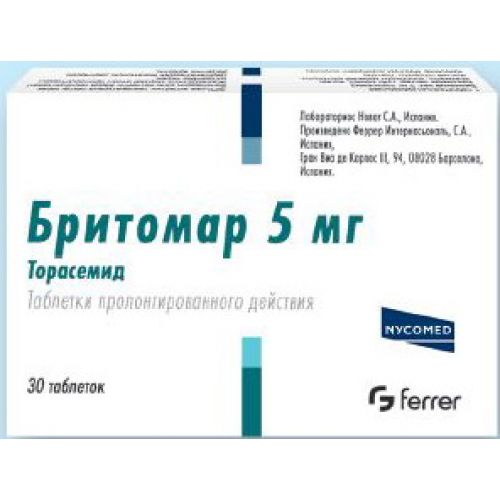
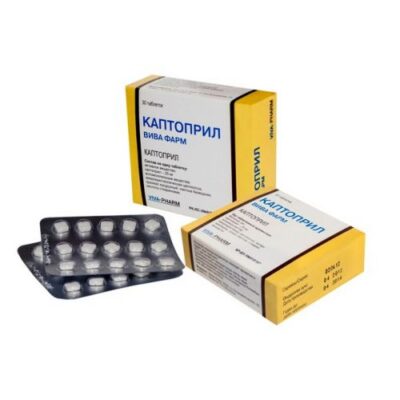
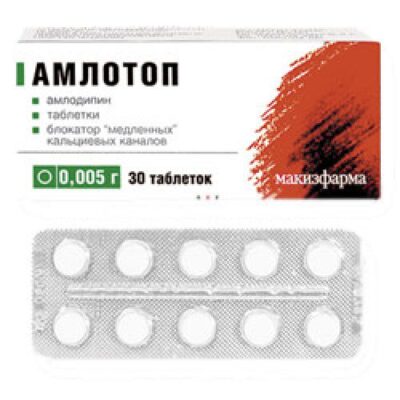
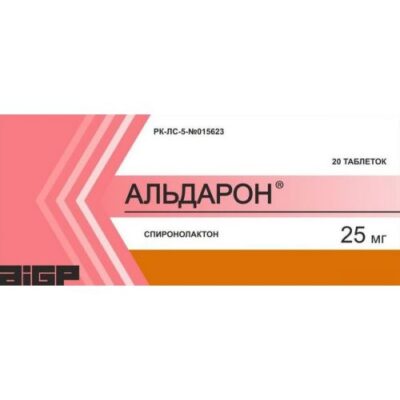
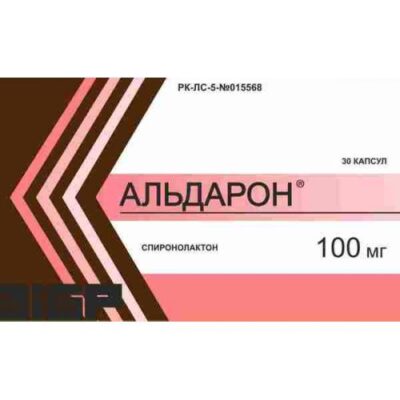
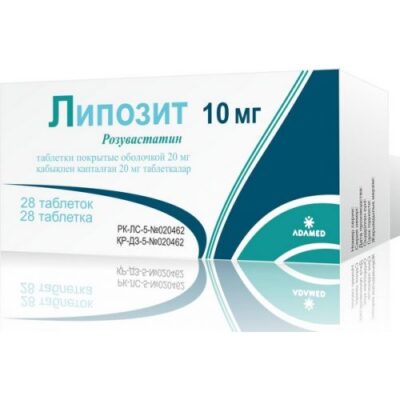

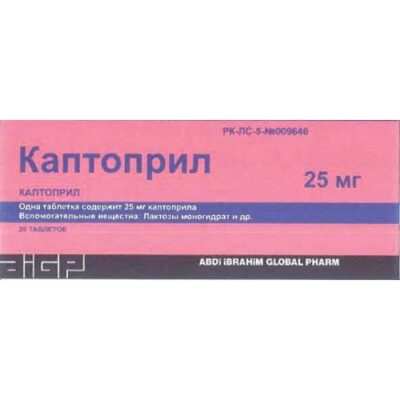
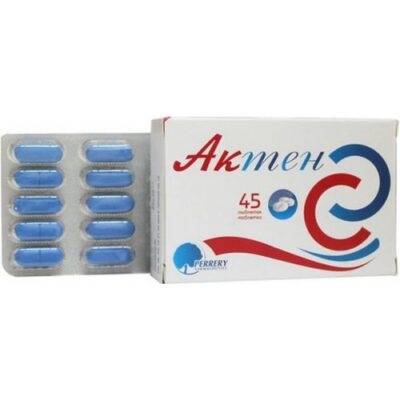
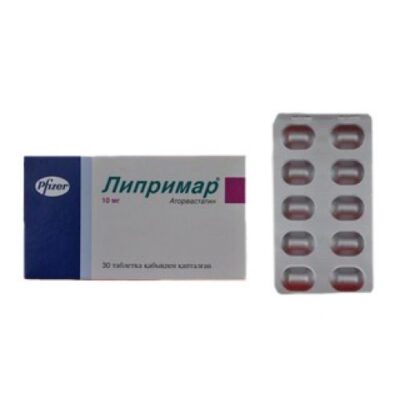
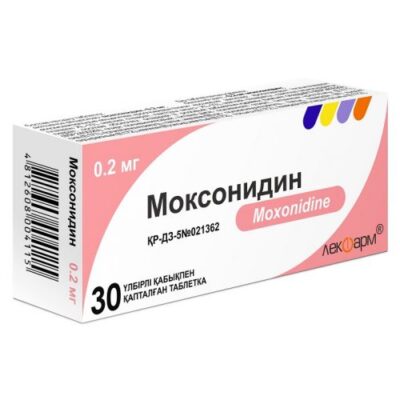






Reviews
There are no reviews yet.